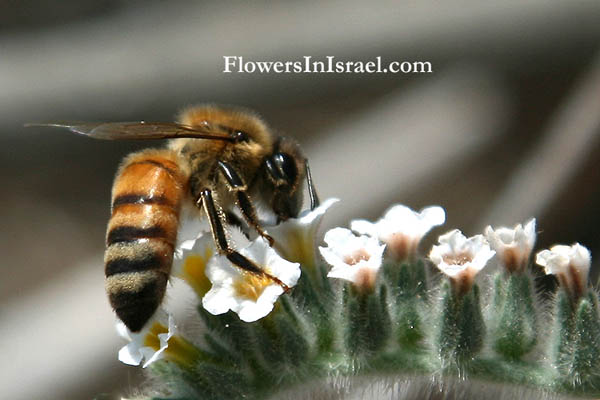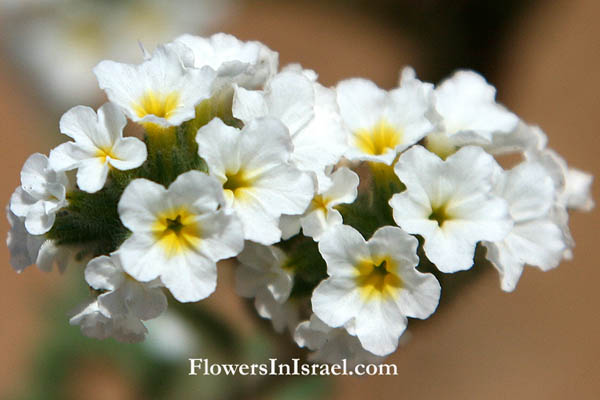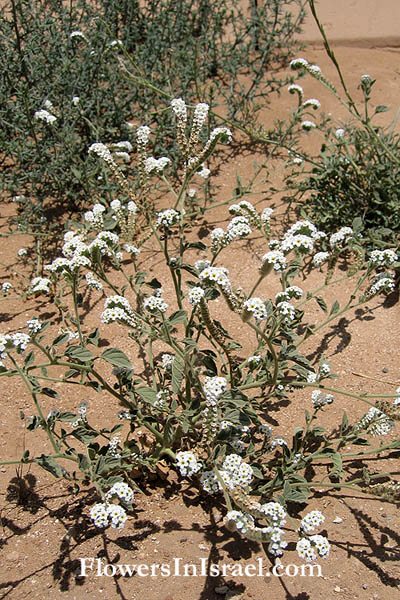Hebrew: עוקץ-עקרב ריחני, Arabic: رقيب الشمس الحلو
| Scientific name: | Heliotropium suaveolens M.Bieb. | |
| Synonym name: | Heliotropium humile Schult. | |
| Common name: | Fragrant Heliotrope | |
| Hebrew name: | עוקץ-עקרב ריחני | |
| Arabic name: | رقيب الشمس الحلو | |
| Plant Family: | Boraginaceae, זיפניים |

|
| Life form: | Annual | |
| Stems: | 25-35 high; erect or ascending; pubescent | |
| Leaves: | Alternate, entire | |
| Inflorescence: | Double scorpioid cymes | |
| Flowers: | Calyx, four- or five-lobed; white salver-shaped corolla, with five regular lobes; stigma conical, entire or shallowly 2-to 4-lobed | |
| Fruits / pods: | Dry drupes, splitting into 4 nutlets | |
| Flowering Period: | May, June, July, August, September, October, November | |
| Habitat: | Disturbed habitats | |
| Distribution: | Mediterranean Woodlands and Shrublands, Deserts and extreme deserts | |
| Chorotype: | Med - Irano-Turanian | |
| Summer shedding: | Ephemeral |

Derivation of the botanical name: Heliotropium, Greek helios, sun; trope, turning; meaning sun-turning, referring to the turning of flowers toward the sun. suaveolens, sweet-scented. humile, low, low-growing, humble. The Hebrew name: עוקץ-עקרב, oketz -akrav, scorpion-sting; inflorescence with small flowers somewhat resembling a scorpion sting.

|